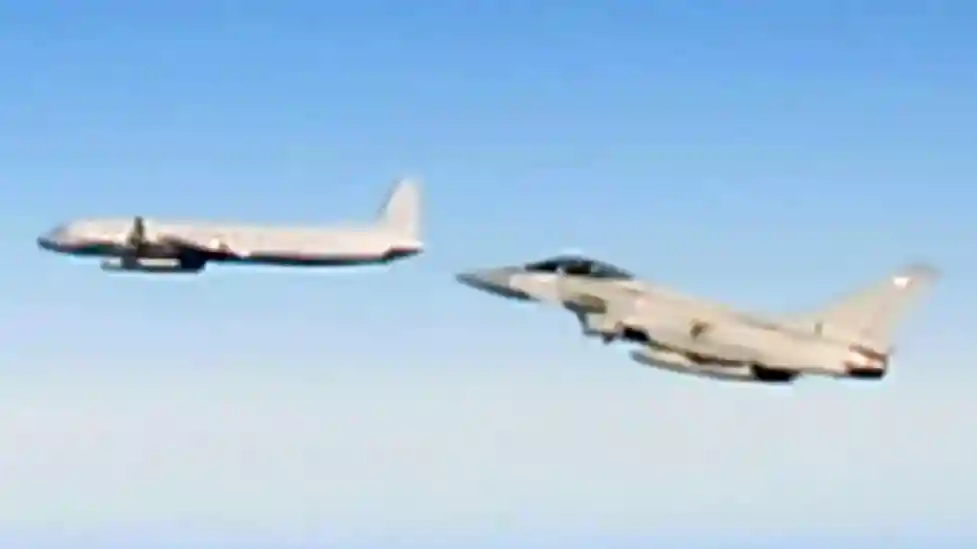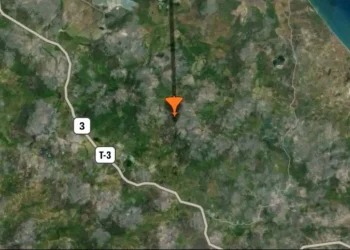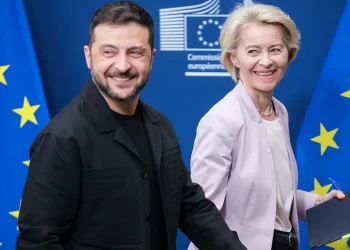RAF Jets Intercept Russian Aircraft Near NATO Airspace Amid Rising Tensions
British fighter jets were scrambled twice this week to intercept Russian aircraft flying near NATO airspace, according to the UK Ministry of Defence — a clear reminder of the ongoing tensions in Europe’s skies.
On April 15, two RAF Typhoon jets were launched from Malbork Air Base in Poland to intercept a Russian Ilyushin Il-20M “Coot-A” intelligence-gathering aircraft over the Baltic Sea. Just two days later, on April 17, another pair of Typhoons intercepted an unidentified aircraft as it departed the airspace surrounding Russia’s Kaliningrad enclave.
These intercepts mark the first missions by the RAF since their recent deployment to Poland as part of Operation Chessman, the UK’s contribution to NATO’s enhanced air policing efforts. British forces are now operating side by side with Sweden, NATO’s newest member, in a coordinated defense of the alliance’s eastern front.
The renewed activity follows UK Prime Minister Sir Keir Starmer’s pledge to increase defense spending to 2.5% of GDP. Minister for the Armed Forces Luke Pollard emphasized Britain’s unwavering support for NATO.
“With Russian aggression growing and security threats on the rise, we are stepping up to reassure our Allies, deter adversaries and protect our national security,” Pollard said.
“This mission shows our ability to operate seamlessly with Sweden and defend NATO’s airspace whenever and wherever needed.”
Intercepting Russian aircraft isn’t new for the RAF. In fact, it’s a routine part of the UK’s air defense strategy.
Last year, two Typhoons from RAF Lossiemouth in Scotland intercepted a Russian Bear-F bomber over the North Sea. While the aircraft didn’t enter UK sovereign airspace, it was flying within the UK’s “area of interest,” prompting a swift response.
In 2023 alone, RAF pilots based at Lossiemouth intercepted 50 Russian aircraft — including a flurry of 21 aircraft over just 21 days.
The RAF’s Quick Reaction Alert (QRA) system ensures fast, decisive action in response to both military and civilian threats. For instance, in October 2024, RAF fighters scrambled to intercept a civilian Boeing 777-300 after a bomb threat was reported on board. Fortunately, that alert ended without incident.
These latest interceptions serve as a reminder that NATO airspace is under constant watch. The RAF, backed by allied forces, continues to maintain readiness and deterrence in a region where military tensions remain high — ensuring that Europe’s skies stay secure.
This article was rewritten by JournosNews.com based on verified reporting from trusted sources. The content has been independently reviewed, fact-checked, and edited for accuracy, neutrality, tone, and global readability in accordance with Google News and AdSense standards.
All opinions, quotes, or statements from contributors, experts, or sourced organizations do not necessarily reflect the views of JournosNews.com. JournosNews.com maintains full editorial independence from any external funders, sponsors, or organizations.
Stay informed with JournosNews.com — your trusted source for verified global reporting and in-depth analysis. Follow us on Google News, BlueSky, and X for real-time updates.














